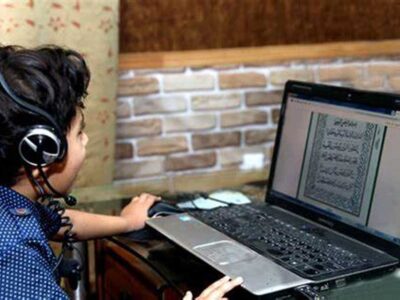Keeping students motivated and focused during the long and meaningful journey of learning Mishnayos can be a challenge without the right tools. Even the most eager learner can lose track of their progress or how far they’ve come, especially when studying multiple volumes or following a structured daily learning plan. That’s where a Mishnayos progress chart can make all the difference. More than just a tracking tool, it transforms the learning process into a goal-oriented experience with visual milestones that provide clear progress.
For students of all ages, whether learning in a classroom or independently, the ability to see their progress fosters consistency, encourages reflection, and ultimately helps build stronger retention. We will explore how incorporating a mishnayos chart or progress chart into a student’s learning toolkit offers practical and psychological benefits that can enhance the overall experience of Torah study in a meaningful and personal way.
How a Mishnayos Chart Enhances Torah Learning
- Visual Motivation for Consistent Study
A Mishnayos progress chart provides a physical and visual record of learning that encourages students to maintain consistency and progress. For younger learners especially, having a colorful, engaging chart to update as they finish each perek or masechta gives them a sense of excitement. Every box filled in or sticker placed is a small celebration, and that momentum builds. For older students, a more structured chart helps them pace their learning across the week or month.
When the schedule gets busy or motivation dips, seeing how far they’ve already come is often the nudge they need to keep going. Instead of learning to feel endless or overwhelmed, the chart breaks it down into manageable, measurable segments. It provides clarity by answering questions like: “What have I done?” “What’s left?” and “Am I on track?” This feedback loop transforms what could feel like an abstract religious obligation into a journey of tangible growth and achievement.
- Cultivating Personal Responsibility in Learning
One of the most important skills a student can develop is a sense of ownership over their learning. A Mishnayos progress chart fosters this responsibility by putting the reins in the student’s hands. When they are responsible for tracking their completion, it strengthens the connection between effort and outcome. Instead of relying solely on teachers or parents to guide them, students begin to understand their role in their learning. Whether a student is preparing for a siyum, tracking daily Mishnah learning, or trying to complete a masechta over the school year, a chart introduces an element of accountability. For students who might be tempted to rush through or skip, knowing they must mark their progress brings greater honesty and reflection into the learning process. Over time, this habit nurtures not only Torah skills but also personal integrity, discipline, and planning—qualities that carry over into all aspects of life.
- Bringing Joy and Celebration to Torah Study
Learning Torah should be filled with simchah (joy), and a progress chart gives students a reason to celebrate. Completing a perek or masechta becomes more than just an academic milestone—it becomes a personal victory. Many schools and families use charts to organize group siyumim or reward systems, which reinforces the message that every step in learning is meaningful. For students who may struggle academically or feel overwhelmed by other subjects, Torah learning can be a place where they can shine. A chart helps highlight that even slow or small progress is still valuable and worth recognizing. Beyond the educational advantages, these celebrations create memories. Students remember not just the content they learned, but also how it felt to complete it, to be recognized, and to participate in the community of learners. A Mishnayos progress chart brings warmth, encouragement, and a sense of shared purpose into every stage of Torah study.
- Helping Teachers and Parents Support Students Better
While the student gains personal growth, a progress chart is also a powerful tool for teachers and parents. It allows them to see where the student stands at a glance—what’s complete, what needs review, and where the learner might be struggling. This insight makes conversations about learning more meaningful and constructive. Instead of vague questions like “How’s your learning going?” teachers and parents can engage with real data: “I see you finished Perek Daled this week. Great job! How did that one go for you?” This targeted feedback makes the student feel seen and supported. It also allows adults to adjust teaching plans, offer extra help, or even pair students for peer learning where it’s needed. The chart becomes a bridge for communication and collaboration. It’s not just about what the student knows but about helping them grow and navigate the learning process more effectively, with thoughtful guidance from those around them.
- Creating a Lasting Connection to Torah
Beyond the school years or formal learning structures, a student who grows up using a Mishnayos progress chart often carries that mindset forward into adulthood. The habit of structured, accountable learning takes root early and becomes a lifelong anchor. Whether that student becomes a rabbi, a doctor, or an artist, the ability to self-direct Torah study will remain. For many, the completed charts from childhood become keepsakes—markers of spiritual growth and persistence.
In a world of distractions and constant change, the familiarity of a charted learning process can bring grounding and stability. It also opens the door to other structured Torah learning programs, such as Daf Yomi or Shas Mishnayos, making them feel more achievable. What starts as a simple visual aid in a binder or notebook becomes a lifelong model for approaching learning: thoughtfully, steadily, and with purpose. That’s a powerful gift to give any student, and it starts with one chart.
A Mishnayos progress chart is more than a tool—it’s a partner in the learning journey. It brings visibility to the effort, encourages responsibility, and makes Torah study an engaging, goal-driven experience. From the youngest students first encountering Mishnah to older learners working toward deeper understanding, the chart offers a practical way to stay on track and remain inspired. For parents and teachers, it provides valuable insights that enable more effective support and communication. For the student, it fosters a lasting connection to Torah by celebrating growth, cultivating discipline, and making learning a rewarding experience. With such a simple yet effective tool, every student can find a path forward, one box—and one Mishnah—at a time.

















